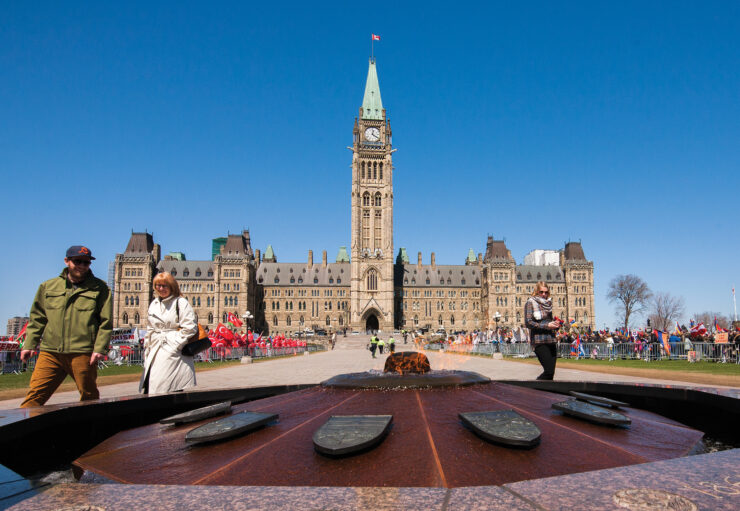On Friday, Oct. 6, the Supreme Court of Canada unanimously ruled that 38,000 records of the abuse that operators of residential school perpetrated against Indigenous children are to be destroyed.
These records were kept as a way for survivors of residential schools to receive compensation, and as per the Court’s ruling, the sensitive nature and confidentiality of these documents serves as justification for their destruction.
According to the CBC, the ruling has divided many Indigenous groups. Some have advocated that they should be preserved as a reminder of Canada’s colonial history and the violence that settlers imposed upon natives of the land, while others feel that the sensitive content—explicit accounts of physical, emotional, and sexual abuse—can do damage to the descendants of the former students.
The Fulcrum is not an Indigenous organization, and when speaking on the ruling and its implications, we remind our readers that we do not want our opinions taking precedence over the voices of those who have faced this violence first-hand, and their families and loved ones.
When considering the outcome of this decision, it’s important to prioritize the voices of those directly impacted by it—the survivors of these heinous institutions. It’s also crucial to remember that we can’t classify Indigenous peoples as a single, homogenous group with a shared opinion on the issue. Clearly, residential schools impacted Indigenous peoples in a range of ways, mentally, physically, and emotionally, and some more than others.
Despite this range of impacts, however, all of their opinions are valid and should be our main focus when examining the outcome of the decision.
The records are a reminder to us of our country’s dark, colonial past. Destroying these records can, in a way, symbolize us erasing this history and moving forward under the assumption that these schools have no impact on Indigenous communities today. But to say this would negate the fact that effects of the abuse is ongoing. The impacts of residential schools are intergenerational, affecting the children, grandchildren, and further generations of survivors.
Carolyn Bennett, Canada’s minister of Crown-Indigenous Relations and Northern Affairs, said she was “very disappointed” by the Court’s ruling, as the CBC reports. Bennett believes that these records are crucial to our government’s reconciliation with Indigenous populations, and the work of the Truth and Reconciliation Commission.
Many Indigenous peoples today experience mental health issues, both from the abuse within the schools, as well as the trauma of being forcefully removed from their communities. This disconnect with their communities has also led many Indigenous peoples to experience a lack of connection with their native languages and cultural traditions, communal violence, and a loss of control over their rightful native territory.
But, conversely, the decision is a powerful way for survivors of the schools, and their descendants, to reclaim and take control of their stories—stories that they never wanted to be part of in the first place.
The graphic details accounted within these records are details that no one should have to live through more than once, if at all. Though necessary for claiming compensation, once survivors and their families have received this money, perhaps the next course of action should be a destruction of the records. As discussed in the CBC, the federal government tried to preserve the records to be kept under the Library and Archives Canada.
Knowing that these records would be open to the public could have drastic implications on the mental health and well-being of survivors and their families, as anyone could read the graphic details of the trauma that residential school teachers and operators inflicted on the children. Even if these stories were anonymized, as per Bennett’s suggestion, the truth is that these stories would still exist—a reminder to survivors of the trauma they faced.
The outcome of the decision is that the records will be preserved for 15 years, during which time survivors can decide if they would like the records to be destroyed or not. Following this period, the records will be destroyed. Whether you agree or disagree with this ruling, we must remember that their destruction does not take away from our country’s violent history of settler colonialism and the forced displacement of Indigenous peoples from their land. While these records are a crucial piece of history on residential schools, they are not our only piece of history, and we are called to educate ourselves on this history in our day-to-day lives in as many ways as we can.
Through this editorial, we hope that we have opened your eyes to the issue and provided some insight on both ends of the argument. We encourage you to do your own research, and speak to your Indigenous classmates and colleagues to understand their thoughts on the ruling.
This decision is a reminder that residential schools and their aftermath still hold a prominent place in our country’s identity. It is a reminder to continue the ongoing work of educating ourselves and our peers on the effects of residential schools, and understand our place in the reconciliation process.





